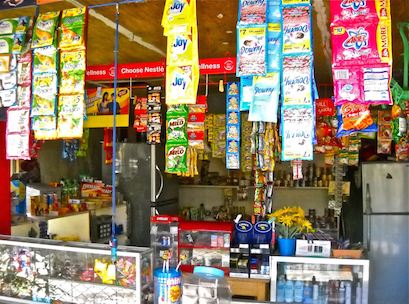Recently I conducted market reviews on a number of retail stores and observed that in many there were signs of poor or non-existing retail processes, a lack of disciplines and/or operating knowledge and skills – and in some instances a failure in management leadership.
Now this got me to thinking about the basics of retailing and to ask the question “do retailers today understand the basics operating retail for success?
The very basic drivers in successful retail are simple: do you know your customer and do you have what they want?
A close friend in the Philippines, Nanay, taught me a very simple retail lesson: During a failed attempt to retire I decided I would give retail assistance to Nanay who operates a “sari-sari” store. This small store was established with a low startup cost and the only strategy was to make money. There was no formal training or retail experience behind it!
After a short period of time it became clear I was not the teacher but actually the student! So I set about documenting the “secrets” to the sari-sari success:
The simple sari-sari model for success.
Know: the cycle starts, (but remember this is continual loop of activity), with the absolute detail in which Nanay knows her customer.
* Customer intimacy – she knows her customer by name, knows their lifestyle, marital status, kids’ names, if anyone is ill or if there has been a birth, marriage or death in the family. She knows them as if they were members of her own family.
* Customer needs – she knows how these people live and more importantly she knows what they need in their daily lives. She knows the difference between basic necessities and luxury items, she knows the purchase patterns.
* Customer value – she knows the importance of efficiency, emotion and entertainment and here retail practice is based on the family values.
Buy: Because she knows her customer needs, shopping habits and how much they can afford to pay she can apply this knowledge to the buying steps:
a. Sourcing – she knows where to purchase and where it is possible to use her cash power to get the lowest prices. Also she knows what to buy early in the morning to get the best products and she knows who will deliver to her store.
b. Range – because the product offer is based on everyday needs her shopping list is constant and she does not allow emotions to disrupt the product offer. She does however understand the principles of seasonal products where buying at the right time and in the right quantity is more complex e.g.: mosquito coils during the rainy season.
c. Quantity – because she is close to the daily selling activities in the store she understands what quantity will sell each day. Further, she will often buy in bulk and then break the total into units to sell at the lowest price e.g. cartons of cigarettes are purchased and then broken into packs which are opened for selling single “sticks”.
d. Repeat purchases – because many products are sourced nearby keeping stock to a minimum is possible and if sales exceed the established selling pattern stock can be “topped up” by way of quick visit back to the source of supply.
Sell: The majority of time is spent in the store and this gives a substantial advantage in knowing the customer behaviors, knowing what does and does not sell and in taking fast business decisions.
a. Price is clearly defined by market affordability and she will never break this rule. Items are sold in the smallest unit size or quantity to offer the lowest shelf price.
b. Necessity sales – these are the primary sales and are driven out of the daily needs of those who live in the neighborhood. Products sold this way include hair shampoos in sachets, cooking oil sold in small plastic bags, rice which can be blended, detergents, soaps and the list continues, These items are purchased every single day.
c. Social interaction – many of the daily sales at the store are an extension of ‘friendly visits and discussions’ where the purchase of product is almost incidental to the social engagement.
d. Considered purchases – there are many purchases each day that are ‘destination driven’ e.g. customers wanting to buy a single cigarette 3. 4, 5, 6 or more times in a single day.
Count: This was an exciting action at the close of the store each night whereby the moneybox would be brought into the house and the ‘accounting process’ would be conducted:
* Step one in the accounting process is a defined value of cash is counted and removed from the moneybox. This is the amount of cash required for purchases the next day, (in modern retailing it would be called the OTB).
* Step two is a further calculated sum is counted and removed from the tin and this is equal to the average daily reserve required to make payment on monthly expenses, (cash flow planning).
*Step 3 attracts the entire family’s attention as all eyes peer into the moneybox to see if there is still cash left inside the little tin box. Any money still in the money box is considered as the day’s profit and is an immediate cause for celebration.
The challenge for you is to stop and challenge yourself with the questions:
1. How well do I know my customer?
2. Does my product offer meet the customer needs?
3. Is my customer service delivering satisfaction excellence?
4. Can I easily and accurately determine if the business is profitable?
If you email darrellwisbey@gmail.com I will send you a complimentary Self-health Checklist. This will give you a series of questions for each of the four steps – Know – Buy – Sell – Count; and upon completion you will have your ‘Health Report’.
InsideRetail.Asia columnist Darrell Wisbey has 40 years retail experience, living and working in Australia and Asia. Darrell delivers seminars and workshops for Philippine Retailers Association Visit Darrell Wisbey.






